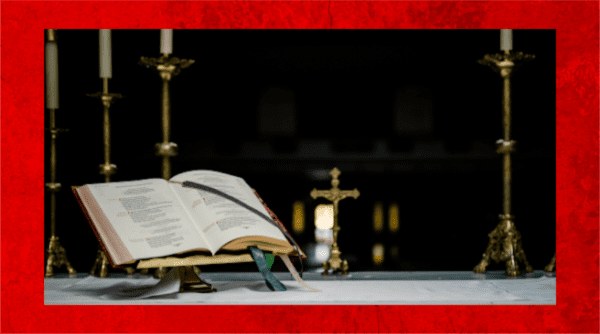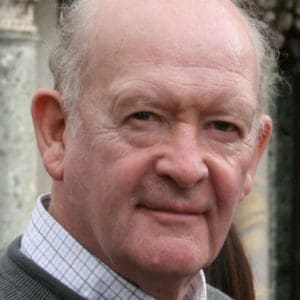As this is the first of the final three posts in this series, I will be summarizing briefly the main concepts in this series and would, therefore, ask new readers to refer to previous posts on each subject for further clarification.
*************************************
I was fortunate to be taught theology by a theological genius who studied Scholastic Theology in the 1950s during the revival of Thomism. He received the highest attainable distinction, a summa cum laude, and was carried on the shoulders of his fellow students to celebrate his achievements. Although it was not a subject that could be studied formally at the time, he managed to master the ‘New Biblical Theology’ that would be so vital for the Second Vatican Council that was soon to be called. (I want to make a clear distinction between what was called at that time the New Biblical Theology, and what after the council came to be called the ‘New Theology’ with which I want to disassociate myself—it being like a hydra with many heads, each head becoming increasingly blind to authentic Catholic teaching and tradition as the years progressed.)
The Primacy of Love
In 1964, I hoped to continue my studies on a higher level, first by going to Rome to study Scholastic Theology in more detail, followed by further studies in Biblical Theology in Germany, France, and at the École Biblique in Jerusalem. It was then that I met a Franciscan priest, Fr. Anthony, who said I should rather go to San Giovanni Rotundo in Apulia to sit at the feet of Padre Pio. He would not be able to add to my knowledge of Thomism and had probably never heard of the New Biblical Theology, but I would find in him the fullest possible embodiment of ‘The Primacy of Love.’ The Primacy of Love was not first conceived as a concept by man but as an act of extraordinary magnanimity planned from eternity by God. The first stage in implementing this plan was that God’s love would become embodied in a human being at the first Christmas. When this love was first released at Pentecost, those who wished to receive this love would turn their hearts freely and daily to him in order to attain, even in this life, what was destined to become their birthright in the next.
The Spiritual Life and Mystical Theology
The way of life given to the first Christians by Jesus, enabling them to keep receiving him and his love, came to be called the Spiritual life. As love always touches the superficial feelings first, it is the emotions that initially react to the divine love as it begins to possess us completely. In early Christian times, the heart not only referred to superficial sentiments or feelings, but to the whole person. As the whole person is being prepared for union with God’s love, the heart becomes possessed by this love as it penetrates deeper and deeper. Mystical Theology teaches how the heart, beyond first superficial feelings, is prepared for the divine union that can only take place when there is a sufficient parity, as unlike things and unlike persons cannot be united.
The very essence of the spirituality that Jesus gave to the first Christians and through them, to us, involves carrying a daily cross. It is by the daily repetition of acts of love, in and out of prayer, that the habit of selfless giving develops. It is the only way to keep turning and opening ourselves to God, directly in prayer and indirectly outside of prayer, enabling divine love to enter us. The liturgy, more specifically the weekly Mass, was the place where the first Christian community would offer the self-sacrifices practiced during the previous week, enabling them to receive the grace to continue living as white martyrs during the following week.
The Ideal Spirituality
Developed in far more detail than in this brief summary, and made meaningful to subsequent generations, this early God-given spirituality must always be seen as the ideal. This is most especially true because it is God-given and bequeathed to the early Church by Our Lord Jesus Christ himself. After several centuries and more than a handful of heretics, this ideal was lost to view, most especially in the Dark Ages. But thankfully a spirituality based on the love of God and a mystical theology that taught how to receive it returned, thanks to St. Bernard and then St. Francis of Assisi.
The principle of the Primacy of Love was enunciated for the first time by Christ himself moments before Francis received the Stigmata on Mount La Verna. It was made clear to Francis that contrary to popular belief at the time, union with God came not through suffering–but through love. This love was none other than the Holy Spirit whom Francis wanted to make the General of his Order. This principle was theologically developed in the teaching of Blessed John Duns Scotus and the preaching and teaching of St Bernadine of Siena and other great Saints who followed him.
It was, however, with St. John of the Cross that mystical theology, teaching how the heart is purified and prepared for union with God, was not only summed up but detailed like never before. And St. Teresa of Avila did likewise, describing how purification enables God’s love to lift us out of ourselves, sometimes to shattering degrees of intensity, before overflowing into every part of our human being.
Throwing out the Baby with the Bathwater
The teaching of Mystical Theology or how to receive God’s love in the very depth of the human heart reached a peak in the seventeenth century only to be crushed with the condemnation of Quietism (1687). It was because the mystical teaching of its founder, Molinos, was not only false but positively dangerous, that anti-mystical witch-hunts threw out the baby with the bathwater. All serious mystical theology was stamped out to the present day, not just amongst the rank and file but amongst the greatest of theologians and highest of authorities. The revelations to St. Margaret Mary successfully reminded the faithful of God’s ever-abiding love, but the demolition of mystical theology meant only a few persevered when their purification deepened. Conventional wisdom told them they were on the wrong path and as there was rarely anyone to convince them otherwise, so many saints in the making were set off course. Although devotion to the Sacred Heart was a reminder of the continual outpouring of God’s love, the knowledge of how to receive it at depth was no longer taught. This is why in this period Our Lady has appeared many times to call people back to prayer where the repentance that teaches selfless loving is learned.
The Prequel that Never Came
The constitution on the liturgy at the Second Vatican Council was perhaps the most eagerly awaited and the most applauded of all conciliar documents. This was because it brilliantly resurrected the ancient liturgy while simultaneously making it accessible and meaningful to most Catholics. However, many like me waited in vain for what should have been its prequel: a constitution on spirituality that would have brought back a modern version of the profound spirituality given to the early Church by Christ himself. It was this spirituality that inspired and animated the hearts of the first Christians at their weekly offerings at Mass. Their hearts throbbed in union with each other and with the heart of Christ, as they were taken up into his mystical loving of the Father, to receive the fruits of his contemplation. The failure to produce such a document has left a gap that has in later years been filled by many bizarre ‘spiritualities’ and regrettably many liturgies are more like shows, sometimes even portraying profane and even pagan ideologies.
Wisdom from St. Bernadine of Siena
In order that his brothers would be aware of the ever-present danger, St.Bernadine of Siena had these words painted in letters of gold around the sanctuary where the liturgy was celebrated. I will quote them again: Si cor non orat in vanum lingua laborat. ‘If the heart does not pray then the tongue labors in vain’.
At the most moving Mass that I can remember as a young boy, the celebrant had recently lost his brother in the D-day landings, and the father of the altar boy had just been reported missing. Almost every family in the congregation told a similar story. Although the Mass was celebrated to the sound of guns firing, bombs dropping and dogfights in the sky, nobody moved; everyone felt closer to each other than ever before. All those Masses during the war were electric. They were all simple Masses in Latin at which everyone was lost in the prayer that made those liturgies deeper, more profound than any I have attended since. The key to the profundity was not even the prayer that united them when they entered the church, but the prayer that united them before they ever came into the church. During the war, Catholic homes throbbed with the heartfelt prayer of those who knew their need of God like never before.
A Crust of Bread and a Thimbleful of Wine
As in every other Catholic home in those terrible times, we prayed long and hard every day. It was the prayer that exercised the muscles of our hearts that generated the heartfelt love that would be offered to God long before we even entered the church. This is what made those war-time Masses what they have never been since, at least for me. Fr. Anthony told me that the most moving Masses that he ever attended were in a concentration camp when the celebrant had no more than a crust of bread and a thimbleful of wine. Everyone’s hearts were as one, not just because of the prayers that were said at Mass but because they all prayed as if their very lives depended upon it– because they did.
Do we need wars to lead us back to the prayer that can alone make our Mass what it should be?
St. Paul was clear that without the love generated in prayer then all else will be worthless and that would include the liturgy, for without love it would be no more than cymbals clashing and gongs booming. The liturgy, most especially the Mass, is the expression of God’s love for us and the expression of our love for him. If our lives are bereft of love or at least of trying to love, then we have nothing to offer when we go to Mass. As it is in giving that we receive, then sadly we receive very little. The ultimate key to renewing the liturgy is not experimenting with the latest bizarre fads and fashions, but the renewal of the love that is generated in prayer long before we even enter the church.
The war we need to turn back to prayer has started for most of us. It is a war between good and evil that is not only being waged in our country but also in our Church.
There is only one remedy and it is to return to the prayer of our forefathers. There alone we can receive the only help and strength that will enable us to survive the greatest threats to our faith we may ever experience.
David Torkington is the author of Wisdom from the Western Isles and Wisdom from the Christian Mystics which complement this series.




